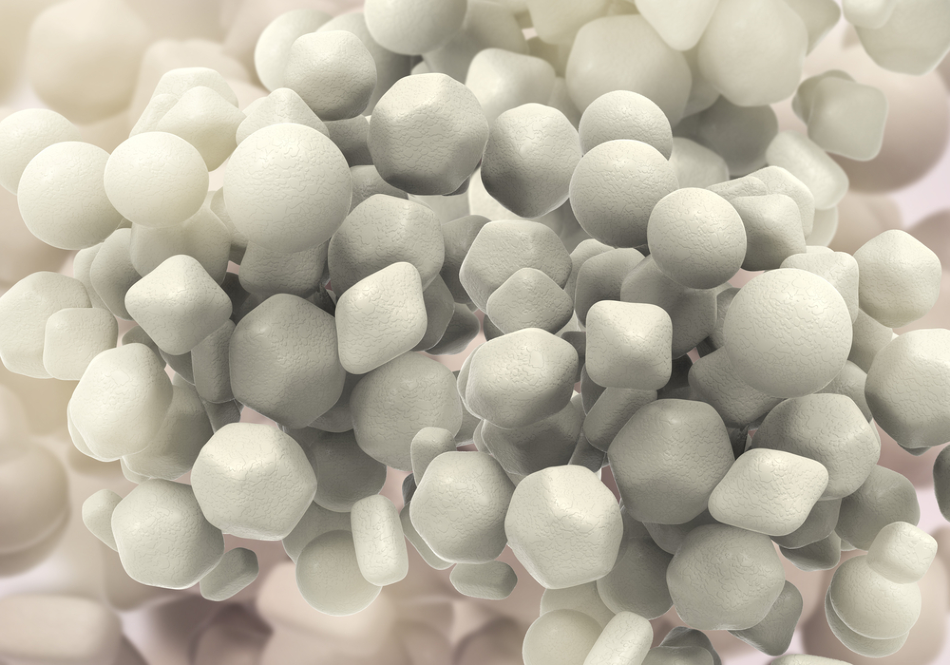
Image Credit: Kateryna Kon/Shutterstock.com
A nanoparticle’s safety is often determined by its toxicity on the human body. Toxicity can be defined in several ways, and it is not only the toxicity of the nanoparticle that is important but also the exposure mechanism.
For example, if it is only toxic through ingestion, but it’s placed into products unlikely to be ingested, such as paint, then it is of less concern than if it was in food. Metal oxide nanoparticles are found in applications from paints to packaging to food, so recognizing them as safe is important for many industries.
Many elements determine a nanoparticle’s toxicity, such as inhalation, ingestion, and skin irritation. The ‘direct toxicity’ is often determined by measuring how they accumulate in tissues and organs, or whether they cause cells to degrade, change, or destroy them completely.
Many nanoparticles, and bulk substances, have a tolerance threshold. When they go above these concentrations in a biological system, they become toxic.
The challenge of studying toxicity is that testing occurs in ideal rather than real conditions, and the focus is often on a certain area with specific parameters. It requires numerous studies using varying parameters to determine how toxic a nanoparticle is and to determine at what concentrations they become toxic and unsafe.
This research enables governments and regulators to produce guidelines determining which materials are ‘Generally Recognized as Safe’ (GRAS), and which are safe within defined limits.
This article discusses some of the most common nanoparticles found in commercial products today.
Titanium Dioxide
Titanium dioxide nanoparticles are one of the most common nanoparticles in consumer products. They are used in products such as barrier coatings, paints, plastic packaging, and as a brightener in foods.
Titanium nanoparticles are found in many everyday foods and are classified as GRAS. They are also approved for use by the U.S. Food and Drug Administration (FDA), being E171 titanium dioxide food additives.
Silicon Dioxide
Silicon dioxide is used in many products, including foods, and nanoforms of silicon dioxide are often present in the widely-used E551 anti-caking ingredients.
While some studies at very high concentrations and specific particle sizes show some adverse effects on the human body, there is no overwhelming evidence that silicon dioxide nanoparticles are toxic.
Zinc Oxide
Zinc oxide nanoparticles are also commonly found in consumer products, including foods and food packaging. They are often used as antimicrobial agents and UV light absorbers.
Zinc oxide toxicity studies are lacking compared to other metal oxide nanoparticles, but the FDA nonetheless approves them as GRAS. Because it is thought that they can accumulate in tissues, they are sometimes considered more dangerous than other nanoparticles as the accumulation can lead to higher degrees of cytotoxic, oxidative stress and mitochondrial dysfunction effects in mammalian cells. However, higher concentrations or larger particles are needed for these effects to occur.
If the nanoparticle size is definitively known, they are considered safe.
Nanoclays
Nanoclays encompass a wide range of clay materials, both natural and synthetic, many of which are metal oxide-based with extra elements added in.
Nanoclays are widely used in commercial food packaging and there are currently no major restrictions in place for using them. Many are covered by existing legislation and are FDA approved and GRAS in the US. The EU is more cautious, approving them on a case-by-case basis. This is due to them only being formed late in the processing stages from bulk clay materials.
Conclusion
Almost all metal oxide nanoparticles used in commercial applications are generally thought of as safe at low concentrations, as there is no overwhelming evidence to the contrary.
References and Further Reading
Gutierrez-Lopez G. F. et al (2015) Safety Studies of Metal Oxide Nanoparticles Used in Food Industry, Food Science and Nanotechnology https://doi.org/10.1007/978-3-319-13596-0_15
Seabra A. B. and Duran N. (2015) Nanotoxicology of Metal Oxide Nanoparticles Metals https://doi.org/10.3390/met5020934
Martirosyan A. and Schneider Y-J. (2014) Engineered Nanomaterials in Food: Implications for Food Safety and Consumer Health Int. J. Environ. Res. Public Health doi.org/10.3390/ijerph110605720
McClements D. J. and Xiao H. (2017) Establishing the factors impacting the gastrointestinal fate and toxicity of organic and inorganic food-grade nanoparticles npj Science of Food https://doi.org/10.1038/s41538-017-0005-1
Disclaimer: The views expressed here are those of the author expressed in their private capacity and do not necessarily represent the views of AZoM.com Limited T/A AZoNetwork the owner and operator of this website. This disclaimer forms part of the Terms and conditions of use of this website.